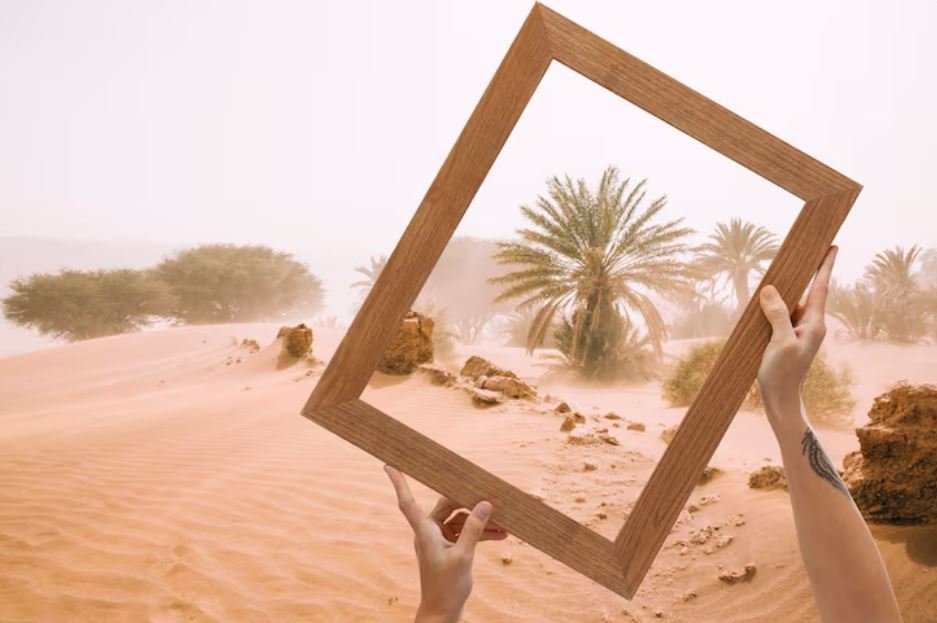
With a confidence that feels remarkably similar to the moment tech pioneers realized their ideas could transform everyday life, The Desert Dream sweeps across Saudi Arabia’s horizon. However, instead of glowing screens, the canvas here stretches across golden sand. The Line is the most blatant indication that a new kind of urban imagination is emerging in the Kingdom, which has been gradually redefining what a city can be over the last ten years. The renderings initially gave me the impression of a glistening blade cutting through the desert, ready to introduce a noticeably better rhythm of life that is both futuristic and profoundly deliberate.
NEOM is simplifying operations and releasing human talent to concentrate on experiences rather than logistics by utilizing advanced engineering and renewable energy designs. This approach reflects the idea of AI agents cooperating like a colony of bees, each carrying out tasks independently but in unison. The promise of an ecosystem that functions without conventional roads or automobiles seems incredibly effective in eliminating clutter, noise, and the gradual onset of urban fatigue that frequently accompanies city life. Conversations with the project’s planners and designers in recent years have brought to light the expanding nexus between ambition and realism, demonstrating the extent to which this endeavor aims to change perceptions.
| Key Area | Related Information |
|---|---|
| Core Project | NEOM – The Line |
| Structural Form | 170 km long, 200 m wide, 500 m high |
| Transport Vision | High-speed rail, 20-minute end-to-end travel |
| Clean Energy | Operates on 100% renewable energy |
| Urban Philosophy | Car-free, emissions-free, fully walkable |
| Technology Backbone | AI-managed city systems |
| Climate Goal | Preserves 95% of surrounding nature |
| Vision Context | Part of Saudi Vision 2030 |
| Key Challenge | Engineering complexity and rising cost |
| Reference Link | https://www.neom.com |
Millions of people began working remotely during the pandemic, and this worldwide change subtly paved the way for people to adopt new urban lifestyles where proximity is determined by design rather than by roads. The Line becomes immensely adaptable in meeting modern demands with its walkable neighborhoods, AI-automated services, and nature-integrated levels. Its structure is much more mobile, especially considering that the high-speed rail can travel the whole length in twenty minutes. It’s almost like entering a movie frame where comfort, movement, and silence all coexist when you live there.
Saudi Arabia has accelerated construction through strategic alliances with international engineering firms, despite ongoing obstacles. Anecdotes about suspended designs that necessitated reconsidering fundamental physics, such as how water should flow or how wind patterns might interact with mirrored surfaces, are frequently used by engineers to illustrate the intricacy of The Line. According to one architect, the structure changed in response to Earth’s minute movements, acting like a character with a mind of its own. These first-person accounts gave the megaproject a human face and served as a reminder that a team is working on unavoidable details behind every daring rendering.
NEOM provides an environment that combines cutting-edge experimentation with a solid technological foundation, which is especially advantageous for early-stage innovators. The city becomes a testing ground for ideas that would stall in conventional settings cluttered with outdated infrastructures by integrating AI-powered logistics and renewable energy systems. One sustainability consultant I recall called The Line a “vertical laboratory,” a location where companies could test concepts free from the burden of the past. Because it portrays NEOM as both a city and an incubator, creating a synergy that feels incredibly resilient, the phrase stuck with me.
The Dream of the Desert train, which travels 1,300 kilometers like a moving palace, is one of the luxury and cultural experiences that Saudi Arabia has embraced in recent years. Its interiors, which are influenced by Arabian atmosphere and Italian craftsmanship, provide a sensory experience that goes well with NEOM’s futuristic vibe. A traveler who had a sneak peek at the idea told me that the golden interiors were “a whisper of old desert tales wrapped in modern indulgence.” This poetic description perfectly encapsulates the emotional pull behind Saudi Arabia’s wider transformation. This balance of innovation and tradition results in a particularly creative story that reimagines what the area has to offer.
The Line’s goal of preserving 95% of the surrounding nature stands out as a compelling argument that cities can expand without overpowering landscapes in the context of global sustainability debates. Energy efficiency has dramatically increased since the Kingdom’s renewable initiatives were introduced, bolstering public confidence in these expansive goals. By creating a perfect climate with strategically placed breezeways, controlled shading, and scattered greenery, The Line goes beyond that trust and makes the desert feel surprisingly comfortable all year round.
Finding testbeds that facilitate adaptive learning is frequently a challenge for early-stage startups. The cognitive-city framework developed by NEOM uses AI to modify resource flows, lighting, and temperature before locals even express their needs. Compared to traditional city living, this is much more efficient, resulting in a smoother daily experience and a significant reduction in waste. The more I think about it, the more it reminds me of the early promise of smart homes, but precisely expanded throughout a whole city.
Saudi Arabia is developing a multifaceted identity through strategic partnerships with architects, technologists, hospitality organizations, and imaginative storytellers. Global influencers and celebrities, particularly those who are enthusiastic about sustainability and technological innovation, have subtly begun to support NEOM’s mission. In the same way that actors and musicians once heightened interest in places like Tokyo or Dubai during previous transformation eras, their endorsements, albeit subtle, influence public curiosity. These similarities seem remarkably similar, confirming the idea that daring infrastructure frequently precedes cultural momentum.
NEOM suggests academies, labs, and creative clusters within The Line’s vertical levels for education and research, forming a stack of experiences as opposed to expansive campuses. The same climate-controlled spaces would be used by artists, scientists, and students, who could easily move between nodes. Though condensed into a shape that minimizes land use while enhancing human interaction, the image evokes the lively energy of cosmopolitan hubs. The idea of creativity and education being concentrated in such a densely connected vertical plane feels especially novel.
The social and economic environments have significantly improved since the introduction of Saudi Arabia’s Vision 2030, with a greater focus on sustainability, entertainment, and culture as well as more varied revenue sources. Younger generations now view projects like NEOM as symbols of possibility rather than as extravagant dreams, thanks to these changes, which have inspired a new sense of optimism in them. Because it implies that people believe in the impact that lies ahead, rather than just the spectacle, that optimism has weight.
Thinking about the larger change brings to mind a discussion I had with a young engineer on NEOM, who likened the project to burying a promise in the sand. He spoke with a mixture of pride and amazement, demonstrating how project managers frequently give their work a personal meaning. The way that people characterize the work—as ambitious, challenging, and significantly influencing their careers—makes that sense of ownership very evident.
